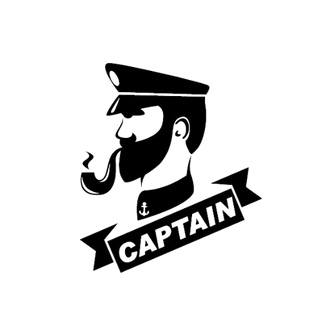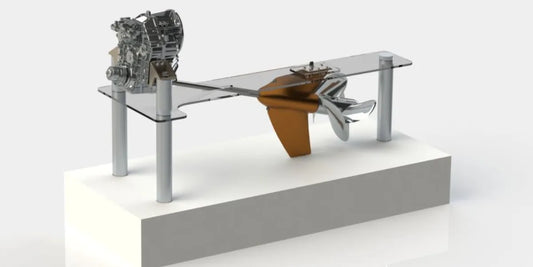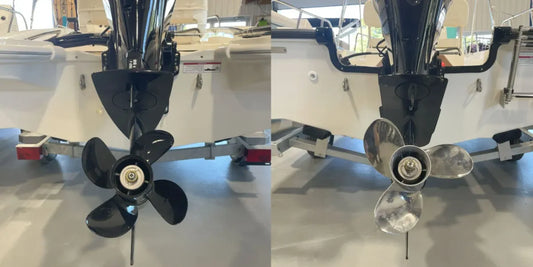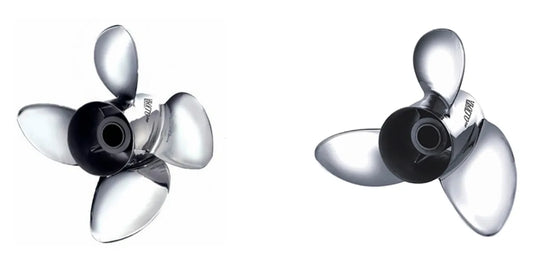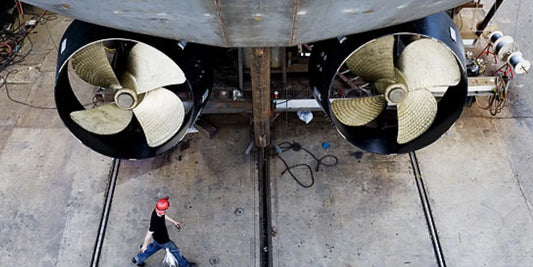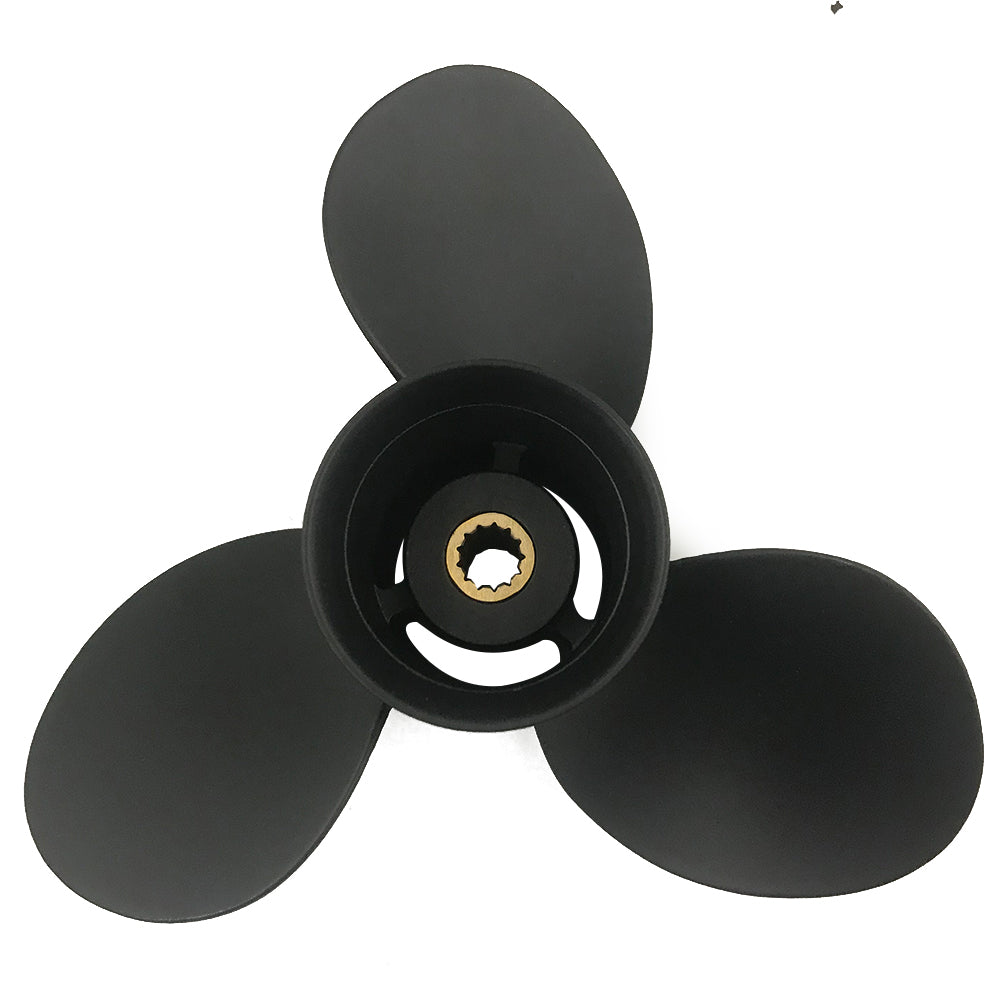Too much emphasis must be placed on safety in motion. One of the most scorching safety issues in responsible boating is undoubtedly determining the speed at which to operate safely. Understanding how to evaluate speed and setting an appropriate speed is not just operational; it is about saving lives, preventing accidents, and ensuring a smooth ride. This dilemmatic article will walk through the factors to consider in assessing speed safety: environmental conditions, the vessel in use, and the rules and regulations related to the waterways. By the end of it all, there will be a clear perspective on how to go about making decisions that keep both you and others safe on every voyage.
Understanding Safe Speed for Your Boat

Defining Safe Speed of Vessels
A safe speed for a vessel is defined as the power-driven boat speed at which a ship can be fully kept under control, avoiding risk to persons aboard it, to any other boats or objects, and to the environment. While determining speed, a large number of factors must be accounted for, including the handling of the vessel, visibility conditions, traffic density in the vicinity, and the presence of navigational hazards. For instance, in a reduced visibility condition such as fog, traveling at a slower speed is beneficial for increasing reaction times and lessening collision risks. Conversely, waterway regulations could establish maximum speed limits for various regions, especially in areas close to shorelines or where sensitive ecosystems are present, to minimize environmental impact and enhance safety.
From a technical perspective, certain conditions related to the vessel, such as hull design, engine output, and braking power, can affect the safe operational speed. For instance, planning hulls generally experience the best handling at higher speeds, whereas a displacement hull tends to seek stability at lower speeds. Operators must evaluate these conditions periodically and combine them with real-time observations —such as the direction of the wind, quietness or height of waves, and strength of the currents—to adapt to ever-changing situations. Altogether, these considerations ensure a vessel moves at a speed calibrated for both safety and efficiency.
Need for Operating Your Vessel at a Safe Speed
The determination of a safe speed is essential in working within the rules of navigation; in addition, it is vital to save lives, reduce navigation hazards, and prevent environmental damage. The safe speed allows an operator sufficient time to gain situational awareness and make informed decisions, especially in unexpected circumstances such as poor visibility, congestion, or adverse weather. According to international standards for marine safety, not adjusting speed increases the collision risk exponentially, as a reduction in reaction time and maneuverability occurs. For example, research has established that doubling the speed of a vessel quadruples the stopping distance, emphasizing that an increase in speed is detrimental to the stopping power of a boat and operational safety. When a ship travels at a speed that generates an excessive wake in sensitive areas, such as those near shorelines or in busy harbor areas, that wake causes erosion, damages surrounding structures, and disturbs local ecosystems. Hence, an appropriate speed, which is from a safety perspective and essential in everyday situations, increases the goodwill of the vessel crew, including passengers, alongside that of other waterway users and the environment.
Organization of Boat Speed Regulations
Boating speed limits are established from the perspectives of maritime safety, environmental resource protection, and minimizing undue conflicts between various classes of waterway users. Such limits, however, experience significant variance depending on location, waterbody type, and jurisdictional regulations. In many jurisdictions, for example, speed restrictions in no-wake zones tend to be more stringent, especially around docks and when close to swimmers from other marine vessels. In those zones, standard speed limits are less than 5 to 10 knots in the interest of reducing wake interference and ensuring safety.
Speed restrictions are frequently imposed to protect ecologically sensitive areas, such as wetlands, coral reefs, and wildlife habitats. For instance, in areas where marine mammals such as manatees or dolphins are common, designated slow-speed zones may be established during certain seasons or made permanent to reduce the likelihood of collisions. The local regulatory framework also requires commercial and recreational boaters to alter their speed in situations such as adverse weather conditions, periods of low visibility, and while navigating through narrow or congested channels.
To encourage compliance, the local authorities would place conspicuous signage, conduct awareness campaigns, and use state-of-the-art monitoring systems, including radar and automated tracking. Anyone discovered to have flouted speed regulations may be fined heavily and have their license to operate a boat suspended, underscoring the need to respect speed regulations in order to facilitate the sustainable and responsible use of waterways.
Factors That Determine Safe Speed

Assessing Water Conditions
When determining a safe speed on waterways, close attention must be paid to current water conditions. It can be said that various parameters, such as wave height, current speed, and tidal fluctuations, play a significant role in ensuring safe navigation for vessels. For instance, wave heights may cause a boat to have a lesser value, thereby increasing the chances of it capsizing, especially in the case of smaller crafts. Currents may displace the ship from its course, forcing operators to adjust speed and course to maintain control frequently.
It is also crucial in water navigation to consider water temperature, as calmer waters increase the risk of an accident should hypothermia set in. Suspended sediments and water clarity alter underwater visibility, with high turbidity levels hiding potential hazards such as rocks, debris, or submerged vegetation. An operator must remain alert and adjust their speed according to the ever-changing conditions presented by the environment to maintain safety and avoid accidents involving the passenger and crew.
Evaluating Wind and Water Conditions
Wind and water conditions are highly intertwined and significantly contribute to navigational problems and overall operational issues. Strong winds can generate high waves, resulting in rough seas that challenge a vessel's stability and handling. If one is to believe meteorological literature, sudden gusts in excess of 25 knots are usually coupled with rapid wave formation and surface agitation, thus reducing maneuvering capability for smaller vessels. Another factor accentuating the wave formation is the direction of the current in relation to the wind, which makes the water pattern choppy or random, thus requiring intricate navigational skills.
Temperature differences in water are worth considering, as they alter the thermal profile, thereby influencing the wind above the water. Potentially, warmer water acts as a low-pressure zone in its locality; thus, winds are accelerated in that area. Such synergies between water and winds demand real-time monitoring with anemometers and wave buoys to collect precise data on speed, direction, and wave height. Proper analysis of these parameters ensures the effective implementation of maritime safety regulations and reduces hazards in ever-changing environments.
Visibility and Speed of the Boat
Visibility plays a vital role in safe and efficient boat operations, and there are just optimum speeds. Lack of visibility due to fog, heavy rains, or a sudden change in weather conditions makes it extremely difficult for the captain to assess their surroundings and identify hazards to make safe navigation decisions. Studies have shown that human reaction time can be slowed by at least 20% in low-visibility conditions, thereby increasing the likelihood of an accident. To counter this, modern vessels are equipped with advanced technologies such as radar systems, LiDAR systems, and infrared imaging, among others, to enhance situational awareness and provide warnings against obstacles or markers invisible to the unaided eye. The skipper may also reduce the vessel speed in proportion to the impairment of visibility as recommended by maritime safety authorities. Research shows that a 50% reduction in speed during heavy fog increases reaction time and spatial awareness, which consequently reduces the chances of collision. This duo of measures ensures that, coupled with good instrumentation, the boat is operated safely and efficiently under differing visibility conditions.
How to Decide If a Speed Is Safe

Key Checks to Determine a Safe Speed
Visibility Conditions Assessment: Considering the current visibility conditions, including fog density, precipitation, or darkness, we note that reduced visibility hinders one's ability to detect another vessel, obstruction, or navigation marks in time. Since the operators shall always abide by the International Regulations for Preventing Collisions at Sea (COLREGs), considering speed in proportion to the time necessary to react should always be deemed a prerequisite for absolute safety.
Traffic Density Analysis: Examine the density of marine traffic in the surrounding area. High-density areas, such as harbor entrances or busy shipping lanes, should be navigated at lower speeds due to safety considerations. One of the advantages of cruising at a lower speed is that one is more able to perform maneuvers without undue pressure and with a safety margin during interactions with other vessels.
Maneuverability of the Vessel: The turning radius and stopping distance are dependent on the vessel's size, type, and handling characteristics. Bigger boats or those with higher inertia will require longer distances to come to a halt or change course, and hence, more caution is needed when adjusting speed in tight or high-demand zones.
Proximity to Hazards: Hazardous underwater topographies, such as sandbanks, reefs, or shallow areas, need to be considered for speed reduction to allow time for quick course modification. Instruments such as depth sounders and up-to-date navigational charts should be used to anticipate such hazards and take necessary precautions.
Weather and Sea State: One should consider the strength of the winds and the heights of the waves, as bad weather can destabilize a vessel or prevent orderly navigation. Hence, a ship is better maintained at low speed during rough seas to avoid capsizing and excessive stress on the boat.
Technological Support: From radar to GPS and other navigational aids, being equipped with such technologies ensures that operators receive real-time data on the surrounding area. Such technologies enrich decision-making; however, their usefulness is realized when they are used alongside low-speed operations conducive to safe navigation and timely responses.
Ensuring safety speeds requires weighing many factors and continuous assessment of environmental, operational, and technological considerations. Judgment on speeding must integrate all of these data and adjust the speed as appropriate to keep risks lower and within safety standards.
Within the Context of Excessive Speed Risks
Speed greatly increases the risk and severity of accidents since it impedes one's ability to react to sudden changes in the conditions around. Nearly all studies reveal that higher velocity implies a longer stopping distance, a shorter reaction time, and greater difficulty in controlling a car or a vessel. For example, with every unit increment in speed, the stopping distance does not increase linearly; instead, it increases exponentially, which makes it very hard to prevent a collision in the nick of time.
In addition, speed multiplies the forces of collisions, thereby enhancing the destructiveness. Crash dynamics explain the interplay between kinetic energy and velocity squared in determining damage, which can extend to human life and property. Speed, therefore, can in itself pose risks by placing excessive burdens on technical devices, such as automated navigation tools, which may not be able to process input and implement corrective actions at high speeds. Such factors underscore the need for a speed regime enforcement, whose set of advanced monitoring systems integrates real-time adaptive protocols to mitigate risk in environments where eyes cannot afford to glance away.
Monitoring the Speed of the Boat Using Technology
With today's technology, advanced tools enable the precise measurement and control of boat speed, which in turn guarantees operational safety and performance optimizations. High-accuracy GPSs have proven invaluable over time, providing real-time speed readings with utmost accuracy. They usually integrate with the onboard navigation software for display, showing relevant data such as velocity with respect to water currents and environmental settings.
Furthermore, ultrasonic speed sensors provide another aspect of the insights available. They can continuously provide information about very reliable speed ranges in challenging environmental conditions. Many of the more advanced vessels improve in this direction by utilizing IoT networks that connect multiple sensors to a central control computer. This provides real-time feedback, enables predictive analysis, and allows for automatic speed changes when specific threshold values are reached.
By having these technological aids installed, operators can remain compliant with speed limits, optimize fuel consumption, and mitigate risks arising from non-compliance or safety violations. These systems represent a significant evolution in maritime operations, with a focus on data-driven methods for addressing navigation challenges.
Boating Safety Guidelines

Practicing Safe Boating to Avoid Collisions
Maintaining situational awareness is a best practice to avoid potential collisions in safe boating. Operators must pay attention at all times to their surroundings, to other vessels, buoys, weather conditions, and any possible obstacles in the water. Navigation tools, such as radar, AIS (Automatic Identification System), and GPS, can significantly enhance awareness by providing real-time positional information and traffic monitoring, particularly. Equally important is the observation of "rules of the road," such as the COLREGs (Convention on the International Regulations for Preventing Collisions at Sea), which provide guidelines on right-of-way, proper signaling, and means of maneuvering. However, the neglect of such rules has been a contributing factor, albeit statistically, to many preventable maritime accidents, further underscoring their importance in ensuring safe navigation. Visibility must be maintained, speed must be reduced when entering congested seas, and every measure must be taken to avoid any accidents during the hours of darkness, low visibility, or inclement weather.
Training and Education for Safe Boat Operation
Proper training and education lay the foundation for safe boat operation, providing the operator with theoretical knowledge and practical skills. An accredited course, approved by maritime safety authorities, may cover topics such as navigation techniques, response to emergency situations, and adherence to safety requirements. Supported by recent evidence, one scale of accident reports in areas where operators receive extensive training shows very low rates of accidents, thereby strengthening the concept of comprehensive education programs. In addition, through practical sessions in controlled conditions (simulated or real) the operator can get acquainted with the control of the vessel, safety equipment, complex situations (the recovery of a man overboard or driving through heavy fog).
Further advancements in disciplines like digital simulation training have positive effects on boat operator education. They could simulate scenarios in which decisions must be made under varying conditions, such as bad weather and busy waterways. Safety certification courses and exams are designed to grant licenses only to those operators who have an adequate level of skill. Continuous development, including refresher courses and skill tests, provides operators with the opportunity to stay current on new technologies and regulations in the maritime sector. A comprehensive training program addresses both technical issues and situational problems related to boat operation, ensuring a thorough understanding of safe navigation and promoting a culture of maritime safety.
Resources for Safe Boating Practices
Official Government Publications: Many government agencies, such as the U.S. Coast Guard and Transport Canada, provide authoritative materials on safe boating practices. These guidelines may include maintenance of the vessels, navigation rules, or emergency response procedures in the event of accidents. These materials are regularly updated to incorporate the most recent amendments in maritime safety standards and regulations, and thus, they remain an authoritative reference that operators can rely on.
Local Boating Education Programs: Community organizations and maritime training centers offer courses tailored to the specific needs of local waterways. These programs often include hands-on training and cover topics such as GPS use, weather interpretation, and collision avoidance maneuvers. Through such programs, operators can develop their skills and ensure greater safety awareness.
Certified Online Training Platforms: There are many online-accredited training formats that host interactive courses about the fundamentals of boating activities' safety. Depending on the course, they may still cover specific modules, such as the pre-departure checklist, using the equipment, or international regulations on navigation. Such training, conducted online, offers flexibility for operators to broaden their knowledge.
Technical Manuals and Standards: Technical manuals are issued by equipment and vessel manufacturers, providing instructions on safe operation and inspection. International agencies such as the IMO and ABYC also issue technical standards and guidelines, which provide authoritative reference on good maritime safety practices.
National Weather Services and Marine Forecasting Tools: Access to real-time meteorological information forms the core of safe boating. Operators can utilize services provided by their national meteorological organizations to monitor evolving weather situations or marine forecasts. These tools enable them to weigh their decisions and avoid hazards associated with inclement weather.
Boating Safety Awareness Campaigns: Initiatives such as National Safe Boating Week or local programs emphasize the importance of wearing life jackets, not drinking while operating a vessel, and following navigation rules. They likely distribute brochures and hold demonstrations to raise awareness among the boating community.
In utilizing these various means, vessel operators can enhance their understanding of the principles of safe boating and contribute to the pursuit of mitigating maritime accidents and ensuring safety at sea.
Conclusion: Ensuring Safety While Operating Your Vessel

Recap of Key Factors for Safe Boat Speed
Ensuring the safety of passengers, waterway users, and the environment is paramount, particularly when operating vessels at a safe velocity. Situational factors considered for setting the speed in most scenarios include weather, visibility, and traffic on the waterway. For instance, diminished visibility resulting from dense fog or rain always demands the control of speed to provide ample reaction time for avoiding collisions.
With that said, vessel types and their sizes also play a crucial role in speed management. Larger vessels typically require greater stopping distances and increased caution during operations in confined waterways. Operators must also factor in water depth and current strength, as high speeds in shallow waters tend to increase the risks of grounding and damage to underwater ecosystems.
Adhering to established speed limits and avoiding "no wake zones" near docks, harbors, or residential areas is another critical factor in mitigating risks. This is because wakes generated at high speed tend to damage property and might even put swimmers or smaller crafts at risk. Apart from physical conditions, advancements in navigation systems enable the precise monitoring of speed and positioning, thereby facilitating better decision-making during operation.
By adjusting vessel speed in accordance with these considerations and employing situational awareness, operators can maintain a high level of safety standards while preserving the aquatic environment. An emphasis on safe boating speeds reflects the operators' commitment to regulatory compliance, environmental protection, and shared maritime safety.
Responsible Boating Behavior
As a responsible boater, I strive to adhere to the rules that ensure the safe, environmentally friendly, and courteous use of waterways. Uniformly aware of all local regulations regarding speed limits, no-wake zones, and other restricted areas, I add common sense to their consideration to ensure all who walk on water are kept from harm. I consider the navigation tools in monitoring, along with my vessel's speed and position, as a means of making informed decisions concerning vessel operation from both a safety and environmental perspective.
While the emphasis on a sound environmental ethic has garnered much attention, the importance of personal responsibility for safe boating practices must never be disregarded.
Some Safe Boating Tips for All-Water Operators
Having some knowledge of proper behaviors and safe boating practices can only do good and never harm anyone. Safe boating is a personal responsibility that each of us must maintain throughout our marine career.
In my opinion, the concept of safe boating practices is grounded in ensuring safety for everyone on or near the water and protecting the aquatic ecosystem. For me, the crux of safe boating is preparation. It covers actions such as pre-departure checks, ensuring all safety gear is on board and in good working condition, and checking weather forecasts to mitigate unnecessary risks. If I prioritize these, I am in fact preventing exposure to avoidable hazards.
Equally important is my observance of rules of the road and local regulations to prevent accidents and lessen conflicts with other watercraft. I maintain my situational awareness by keeping a watchful eye on my surroundings, respecting speed limits, and ensuring clear communication with other boaters. These methods are instances of mutual respect for safety and are imperative when sharing waterways.
Safe boating is chiefly an expression of a sense of responsibility and stewardship. By staying informed, exercising vigilance, and promoting awareness among the boating community, I hope to help create an environment where safety and conservation are prioritized above all else. It is precisely because I uphold these values that I may safely go out on the water and leave it in a pristine state as a gift to generations yet to come.
Reference Sources
- What Is a Safe Speed? - Discusses factors like visibility, traffic density, and vessel maneuverability.
- Safe Speed - Covers visibility conditions, water and wind conditions, and traffic density.
- What Determines If a Speed Is Safe for Your Boat - Explains factors such as wind, water conditions, and area laws.
- Knowing When You're Operating Your Vessel at a Safe Speed - Highlights vessel characteristics, weather conditions, and other key considerations.
- Safe Speed on the Water: A Guide to Boat Speed Limits - Focuses on maintaining control, avoiding collisions, and determining stopping distances.
Frequently Asked Questions (FAQs)
What determines whether your boat speed is safe?
Several factors determine whether a boat's speed is safe, including water conditions, boat traffic, and visibility. The type of vessel, such as hull design and propulsion, is also essential. For example, a boat operator should be aware of the vessel's handling behavior at various speeds, especially in choppy waters and when encountering strong winds. Speed limits and speed restrictions posted in the local area must be observed at all times for safety. If these factors are understood, the boating experience will go smoothly, and safety will be ensured.
What speed should be maintained according to wind and water conditions?
The wind and water conditions have a significant impact on your boat's ability to stay on course or travel at speed. If wind speeds and direction are too strong, you will have to slow down to retain control of your boat. Choppy water may affect the stability of your vessel, requiring extra caution in navigation. Constantly adjust your speed according to the nature of these conditions to ensure a safe journey and prevent accidents. Keep an eye on these environmental parameters, and you will have a much happier boating experience.
What do you check to decide whether the speed is safe for your boat?
Local speed limits, boat traffic density, and general water visibility all contribute to determining whether a certain speed can be considered safe for a vessel. Once conditions around a vessel are assessed, which may include other boats or obstacles, further consideration should be given to the vessel's settings or configurations and how it may behave at a specific speed. Maintaining a safe speed will prevent the boat from colliding with another ship or an obstacle. Always prioritize safety to help keep your boating experience enjoyable.
Why is it so important to know when it is safe to operate your boat at a certain speed?
Understanding the concept of safe speed will help you prevent boat accidents and save everyone on board. Operating at a safe speed offers ample time to react to any sudden changes, such as the confrontation with another vessel. A safe speed allows for maintaining control over the boat while navigating. A safe speed for safe maneuvering under various conditions also reduces the risk of collision. Thus, a boat operator should always be aware of his or her speed relative to the surroundings.
How does vessel traffic influence the speed you should be operating at?
A factor that largely determines a safe speed for your boat is the presence of vessel traffic. Lying in traffic-congested areas, it is imperative to reduce speed to prevent coming too close to another vessel. This prevents collisions and allows for greater maneuverability. On the contrary, open waters with fewer boat traffic permit vessel operators to run at much higher speeds, of course, within the limits of safety. Always adjust your speed according to the density of boat traffic and the movement of other vessels around you.
What measures can you institute to avoid collisions while operating your vessel?
Safe speeds must always be maintained, and a watch must be kept for other boats to prevent collisions. Every time you have to take steps to avoid a collision, you have to either slow down or change course. Some knowledge of navigation rules and a concern for the right of way will also go a long way toward assisting you in deciding what to do when you are on the water. Proper signaling and clear communication will further enhance safe operations between boaters. Prioritizing these actions will minimize the chance of accidents while boating.
